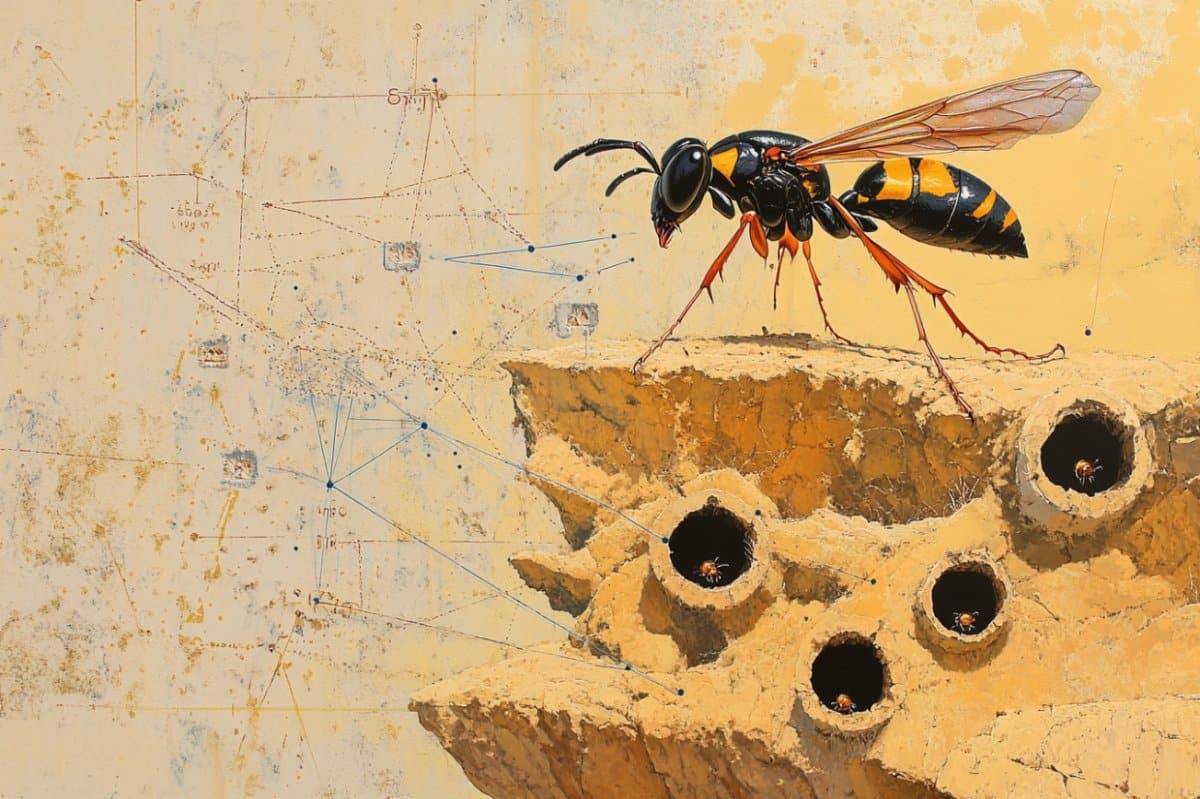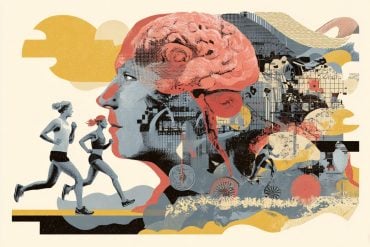Summary: A new study reveals that digger wasp mothers can keep track of up to nine burrows, feeding their offspring in precise order and adjusting schedules based on need or survival. Despite nesting among hundreds of nearly identical burrows, these wasps rarely make mistakes, delivering food with an error rate of just 1.5%.
They remember which nest belongs to which offspring, when they last visited, and how much food each larva received—an impressive cognitive feat for such small-brained creatures. Researchers say these findings challenge assumptions about insect intelligence and shed light on how memory evolved to meet real-world challenges in nature.
Key Facts:
- High Cognitive Capacity: Wasp mothers track multiple nests and feeding histories.
- Flexible Scheduling: Feeding order adapts based on larval survival and food intake.
- Natural Accuracy: Only 1.5% of 1,293 deliveries went to the wrong nest.
Source: University of Exeter
Wasp mothers have stunning brainpower when it comes to feeding their young, new research shows.
Digger wasps make a short burrow for each egg, stocking it with food and returning a few days later to provide more.
The study reveals that mother wasps can remember the locations of up to nine separate nests at once, rarely making mistakes despite the fact nests are dug in bare sand containing hundreds belonging to other females.

Mothers feed their young in age order, adjusting the order if one dies, and they can even delay feeding offspring that had more food at the first visit. Their intricate scheduling reduces the chance that offspring starve.
“Our findings suggest that the miniature brain of an insect is capable of remarkably sophisticated scheduling decisions,” said Professor Jeremy Field, from the Centre for Ecology and Conservation on Exeter’s Penryn Campus in Cornwall.
“We tend to think that something so small couldn’t do something so complex.
“In fact, they can remember where and when they have fed their young, and what they fed them, in a way that would be taxing even to human brains.”
Professor Field added: “As humans, we would achieve this by thinking back to what we have already done, which is called ‘episodic memory’.
“We don’t yet know how wasps achieve these remarkable mental feats.”
The digger wasps in the study live on heathland in Surrey, UK, where they hunt caterpillars on heather plants.
Mother wasps first dig a burrow, then find a caterpillar, paralyse it, put it in the burrow and lay an egg on it – so the emerging larva can eat the caterpillar.
The mothers then cover the burrow entrance and leave – to start a new burrow or feed existing offspring.
They return two to seven days later, firstly to check if the larva has survived. If it has, they bring more food – up to eight caterpillars – seal the nest and leave again, never to return.
If they find a dead larva, mothers lay a new egg and move this nest to the back of the queue for feeding.
Previous research has showed digger wasps use visual landmarks such as stones to find their nests.
“Despite nesting in relatively featureless bare sand, often among hundreds of intermingled nests of other females, mothers rarely make errors in revisiting their nests,” Professor Field said.
“Only 1.5% of the 1,293 food deliveries in the study went to other females’ nests.”
The study also tested wasps by swapping caterpillars as mothers prepared their burrows. Those given larger caterpillars adjusted their schedule to wait longer before providing additional food. During the delay, they started off other offspring.
Mothers did sometimes make mistakes, especially if they had more offspring or when the feeding order was altered due to an offspring dying.
Professor Field added: “Memory capacity is often thought to be ‘expensive’; the brain needs the machinery – in the form of neurons – to remember, and the energy to carry out that function.
“Lots of experiments have been done in labs, for example putting insects in mazes and other tests to find rewards.
“But this study shows what the wasps really do in the wild – it reveals why this ability is relevant to their lives, and why natural selection has favoured this.”
About this memory and evolutionary neuroscience research news
Author: Louise Vennells
Source: University of Exeter
Contact: Louise Vennells – University of Exeter
Image: The image is credited to Neuroscience News
Original Research: Open access.
“Memory and the scheduling of parental care in an insect population in the wild” by Jeremy Field et al. Current Biology
Abstract
Memory and the scheduling of parental care in an insect population in the wild
Animals are expected to schedule their activities so as to maximize fitness. Vertebrates achieve this using memories of previous events—what happened, where, and when—but most studies have been lab based.
Here, we investigate the scheduling of parental care by progressively provisioning digger wasps (Ammophila) in their natural environment, where fitness consequences are observable and we can relate behavior to its ecological context.
Despite their miniature brains, females used information including all three elements of the what-where-when paradigm.
Remarkably, they remember the locations of up to 9 separate nests simultaneously (where), each nest containing a single offspring.
Without having to resample, females feed offspring in order of age (when), reducing the chance of starvation, and can adjust the sequence flexibly.
Memory capacity might sometimes constrain performance: offspring were fed out of order when there were more of them to choose between or if the age sequence was altered following offspring deaths.
Mothers delayed feeding offspring that had been given larger first food items experimentally (what), enabling them to initiate additional offspring earlier, but in this case decisions were based on resampling offspring needs directly rather than on memories of the food provided during egg-laying.
Resampling could reflect ecological pressures rather than cognitive constraints: mothers relied on memory if resampling would expose offspring to parasites but resampled when risks were reduced.
Progressive provisioning requires mothers to coordinate the feeding of multiple offspring and assess offspring maternity and needs during development.
These skills may have preadapted some lineages for sociality.






